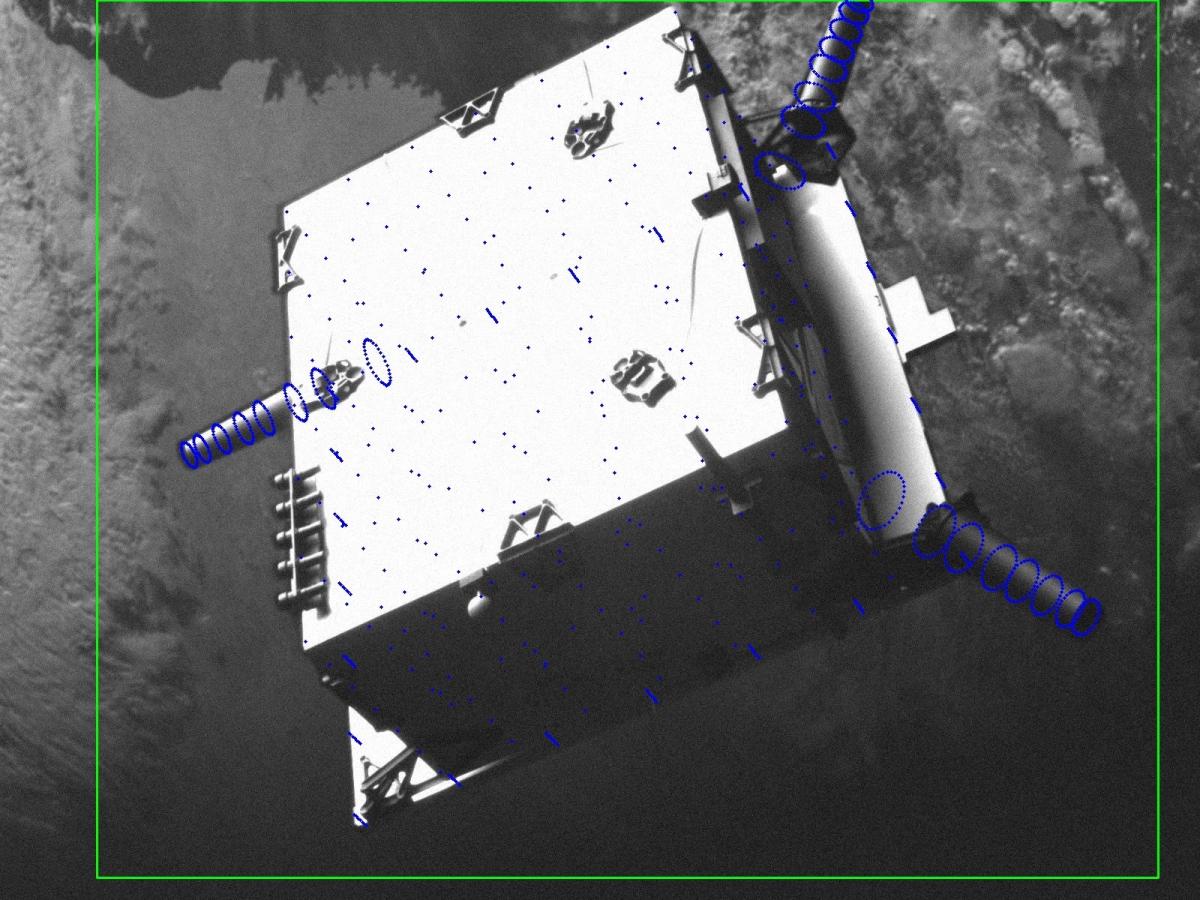
AIML’s space AI technology is able to determine the position and orientation of the Tango satellite using only images from a single camera view.
South Australia’s leadership in space innovation has been recognised, with a University of Adelaide-led team securing first place in a global AI competition organised by the European Space Agency.
The , which concluded last month, saw international teams compete to build custom AI software that can estimate the pose (position and orientation) of a satellite in orbit using only an image.
In the competition, a dataset of labelled computer-generated images was provided to each team to train their AI models. The models were then tested and benchmarked for accuracy on real photographs of a scale model of the satellite. Machine learning researchers refer to this idea as solving the domain gap problem – training AI on labelled data from one source (domain) and then successfully deploying it on unlabelled data in another domain.
The subject of the challenge, a microwave oven-sized satellite named Tango, was launched by the Swedish Space Corporation in 2010 and was shut down permanently in 2013.
Team TangoUnchained – a collaboration between the University’s at the University’s Australian Institute for Machine Learning (AIML), and European space startup – competed against 35 other groups to place first and third in the competition’s two categories, repeating the University’s previous success placing first in the .
“Challenges like this give our students and researchers real, applied scenarios to test their skills. They also demonstrate the quality of our work to international clients and partners.”Professor Tat-Jun Chin
Team members included research student Mohsi Jawaid, postdoctoral researcher Dr Bo Chen and SmartSat CRC Professorial Chair of Sentient Satellites Professor Tat-Jun Chin from AIML and Augustinas Zinys and Marius Klimavicius from Blackswan Space.
The ability of AI systems to accurately determine the pose of satellites, spacecraft, orbital debris and asteroids is crucial for autonomous spacecraft, or in missions where direct human control is costly and/or error prone.
AIML research student Mohsi Jawaid said that AI-based computer vision systems provide a compelling sensing and perception solution for autonomous space missions.
“And it’s not just satellites, it could be any space bodies, space junk, asteroids. You want to get accurate vision of it so you can approach it safely.”
The team took an agile approach to the challenge, with different members taking charge through different phases of the project. Dr Bo Chen has helped build AIML’s track record in AI in space, having also played an instrumental role in winning the 2019 challenge.
Professor Tat-Jun Chin said that competition in AI for space technology is growing.
“The latest competition was much tighter, no doubt due to the growth in interest in space and AI over the last few years,” Professor Chin said.
“Challenges like this give our students and researchers real, applied scenarios to test their skills. They also demonstrate the quality of our work to international clients and partners.”
The team also acknowledged the generous support of the University’s High Performance Computing service in providing access to the Phoenix supercomputer, which was a major contributing factor to the team’s success.






